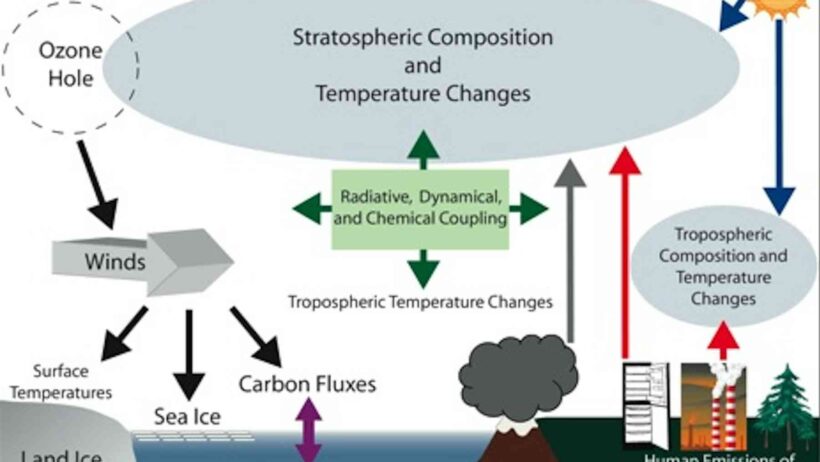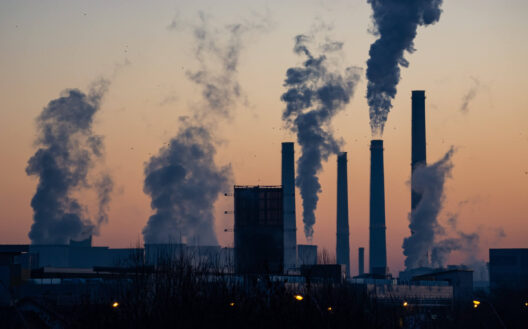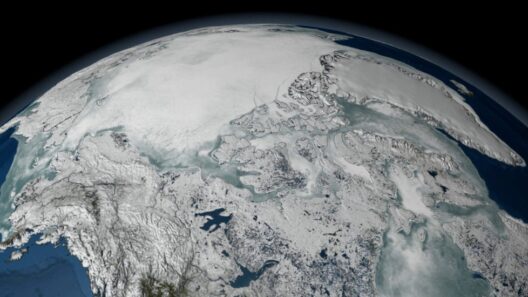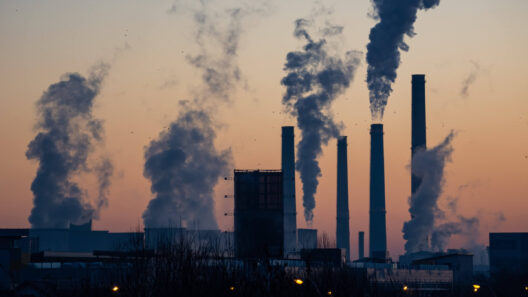Global warming, an inexorable consequence of anthropogenic activities, has drawn significant scrutiny in recent decades, particularly in relation to its impact on the Earth’s atmospheric layers. A pertinent inquiry arises: Does global warming lead to ozone depletion or increase? This discourse seeks to elucidate the intricate relationship between global warming and ozone dynamics by delineating the complexities of atmospheric chemistry and the role of greenhouse gases.
The ozone layer, situated within the stratosphere, serves as a critical shield against the sun’s harmful ultraviolet (UV) radiation. Composed predominantly of ozone (O₃) molecules, it has historically been a buffer for Earth’s ecosystems and human health. However, increasing human activities—especially the release of chlorofluorocarbons (CFCs), halons, and other ozone-depleting substances—have resulted in significant degradation of this protective layer, leading to the phenomenon commonly referred to as the ozone hole.
Understanding the causative agents of ozone depletion requires a thorough examination of chemical interactions in the stratosphere. CFCs, once heralded for their utility in refrigeration and aerosol propellants, release chlorine atoms upon exposure to UV radiation. These chlorine atoms initiate a catalytic cycle that destroys ozone molecules, which can lead to substantial depletion over time. Concurrently, the emission of nitrogen oxides (NOₓ) from both natural and anthropogenic sources can contribute to ozone depletion, particularly during stratospheric conditions. This highlights a critical intersection where human activities induce both global warming and stratospheric ozone layer damage.
The correlation between rising global temperatures and atmospheric processes is nuanced. The scientific consensus indicates that global warming is primarily caused by the accumulation of greenhouse gases, such as carbon dioxide (CO₂), methane (CH₄), and nitrous oxide (N₂O). These gases trap heat in the atmosphere, resulting in an increase in both surface and atmospheric temperatures. As global temperatures rise, the dynamics of atmospheric circulation can also change, leading to variations in stratospheric temperature, which is crucial in understanding ozone concentration.
Increased stratospheric temperatures, driven by a warming climate, can actually impede the natural processes that rejuvenate the ozone layer. The gas exchange between the stratosphere and troposphere can be altered, affecting the concentrations of ozone-destroying radicals and ultimately slowing the recovery of ozone levels. This interplay illustrates a complex feedback loop: while human activities directly harm the ozone layer, broader climate trends exacerbate these adverse effects.
Moreover, the intensity of sunlight reaching the Earth significantly influences the chemical pathways leading to ozone formation and destruction. Enhanced solar radiation due to climate change may accelerate ozone depletion, particularly in polar regions, where the phenomena of dynamic atmospheric processes are starkly pronounced. The interaction between increased UV radiation and altered atmospheric dynamics is critical for understanding future scenarios in ozone recovery.
Significantly, climate change influences atmospheric circulation patterns, such as the Brewer-Dobson circulation, which transports ozone-rich air from the tropics to the poles. Changes in these patterns can subsequently impact the distribution and concentration of ozone across different latitudes. Modeling studies suggest that under continued greenhouse gas emissions, regions traditionally bolstered by higher ozone levels may face diminishing concentrations, leading to adverse consequences for ecosystems and human health.
Furthermore, the relationship between global warming and ozone cannot be compartmentalized. The greenhouse gases responsible for climate change not only contribute to temperature rises but can also influence the release and concentration of ozone-depleting substances. For instance, increased temperatures can stimulate natural processes like wildfires, which release particulates and trace gases into the atmosphere, potentially aggravating ozone depletion processes.
Consideration must also be given to the potential for positive feedback loops. Altered climatic conditions can lead to changes in vegetation cover and land use, factors which additionally contribute to the production of biogenic volatile organic compounds (BVOCs). These compounds can react in the atmosphere to produce ozone, illustrating another layer of complexity in the relationship between global warming and ozone levels.
To navigate this intricate web, it is indispensable that global policies addressing climate change also encompass measures aimed at safeguarding the ozone layer. Notable agreements, such as the Montreal Protocol, have historically resulted in the cessation of ozone-depleting substances, illustrating that concerted international efforts can effectuate change. However, as temperatures continue to rise, continuous monitoring and innovative mitigation strategies must remain at the forefront of environmental policy.
In conclusion, the interplay between global warming and ozone depletion is not a straightforward narrative. While global warming does not directly cause ozone depletion, it significantly influences processes within the atmosphere that can exacerbate the degradation of the ozone layer. The complexities of atmospheric chemistry coupled with altered climatic patterns necessitate a holistic approach to environmental stewardship, integrating climate action with ozone protection to foster a sustainable future. Ongoing research is vital for elucidating these interactions further, ensuring that humanity can continue to thrive under the sun’s warm embrace while protecting the delicate equilibria that sustain life on Earth.







